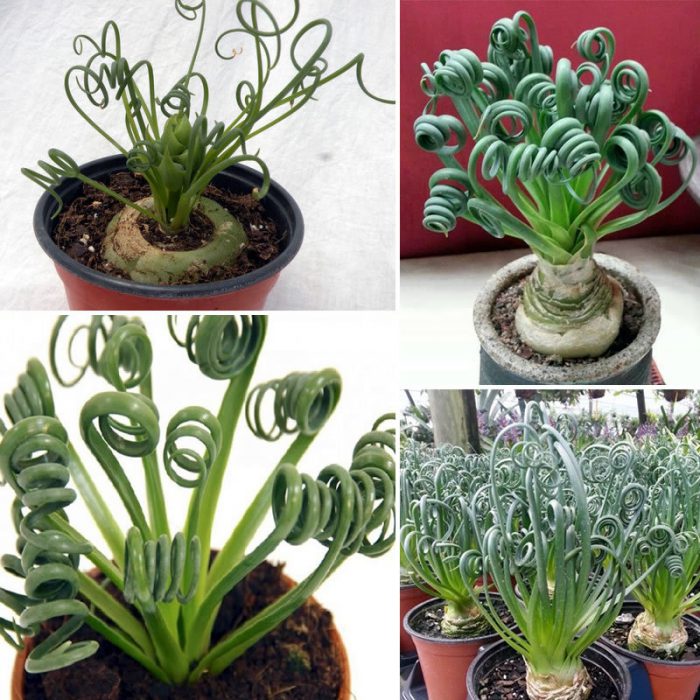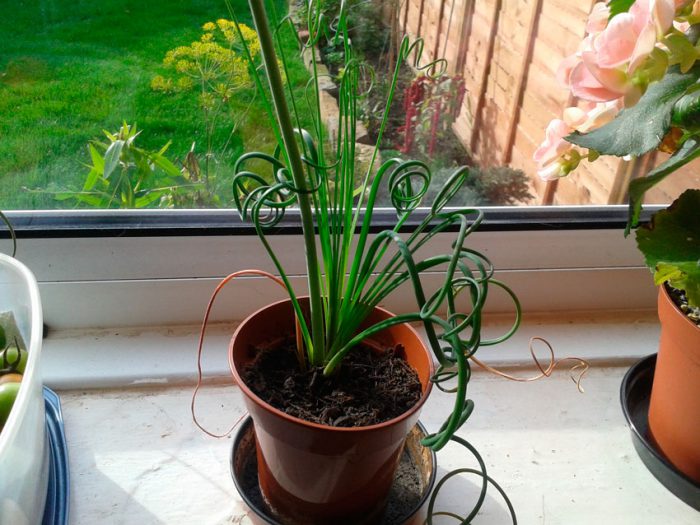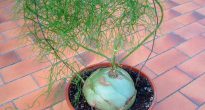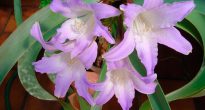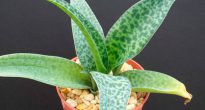A herbaceous plant such as Albuca is directly related to the Asparagaceae family. In nature, it can be found in South Africa. Such an unusual name is associated with its ability to throw out a peduncle bearing white flowers. So, translated from Latin "albicare" means "shoot white."
A perennial succulent like albuca spiral (Albuca spiralis) is a bulbous plant. The round, slightly flattened onion is painted white, and it reaches 5 centimeters in diameter. It has a fibrous white root system. There are from 15 to 20 leaves, which are collected in a root rosette. The height of the leaves does not exceed 15 centimeters. Such fleshy linear-shaped leaves are painted in greenish-gray color, they stick out in a spiral and if straightened, the length can reach 30–35 centimeters. The leaves curl up like a serpentine when it gets too hot. This is a natural mechanism that is able to protect plants from excessive fluid loss. The length of the fleshy, rather thick peduncle is 60 centimeters, and it is painted in a bluish color. Loose racemose inflorescence bears from 10 to 20 drooping flowers with a diameter of 3 centimeters. Each flower has a four-centimeter peduncle. There are small pointed bracts. A pale green or pale yellow corolla has a bell-shaped shape. It has petal-shaped lobes in the amount of 6 pieces, which are located in 2 circles. So, 3 lobes are floating and bent almost horizontally, and the remaining 3 are lowered down and cover the pistil and three rather long stamens. On the petals there is a wide strip of green, as well as a yellowish border. There are species with fragrant flowers, and their aroma resembles a creamy vanilla smell. When the plant fades, the fruits appear, presented in the form of a box with glossy black seeds.
Content
Caring for the spiral albuka at home
Illumination
This plant is very fond of light. In order for it to grow intensively, develop normally and bloom profusely, the lightest window should be chosen for its placement.
Temperature regime
Also, this succulent loves warmth very much. In the summer, it must be kept at a temperature of 25 to 28 degrees, and in the winter - from 13 to 15 degrees.In order for the albuca to bloom in spring in the last November and first December days, it should be placed in a cool place, so it should be no more than 10-15 degrees during the day, and from 6 to 10 degrees at night.
How to water
During active growth and flowering, watering should be abundant, but rather rare. So, you need to water only after the top layer of the substrate dries thoroughly. Watering should be reduced after the albuca begins preparing for the dormant period. At this time, her foliage begins to lie down. During the rest period, watering is not carried out.
Top dressing
You need to feed during intensive growth, as well as flowering. To do this, use a complex mineral fertilizer for succulents.
Transplant features
The transplant is carried out in the autumn after the dormant period ends. Suitable soil should be light, water and air permeable, drained and contain coarse sand. You can use commercially available succulent soil. Don't forget to make a good drainage layer at the bottom of the container.
Features of flowering and dormancy
This plant blooms in April-May and this period lasts for about 2.5 months. After the plant has faded, it needs to fertilize the soil for the last time and reduce watering. After the leaves all wither, the plant is not watered until late autumn. At this time, the container with the onion should be kept in a place with normal room temperature. In the last fall weeks, transplant into new soil, and then gradually return to normal watering. The plant needs to be rearranged in a bright and cool place.
Reproduction methods
You can propagate it with baby bulbs, as well as seeds.
For sowing, you must use fresh seeds. Sowing is carried out on the surface of purchased soil for succulent plants. The container is covered with glass or foil, and the seeds are germinated in a well-lit and warm (from 26 to 28 degrees) place. The first seedlings will appear after about a half moon. Watering must be done very carefully, avoiding overflow. At first, the leaves grow straight, and after a few months, in the presence of bright light, they begin to curl. By the end of the first year, the plant will have formed a small bulb. The first time such a plant will bloom only in the third year after sowing.
Baby bulbs must be carefully separated from the mother plant during the transplant process. Then they should be planted in a separate container, the diameter of which should be 7-8 centimeters. With this method of reproduction, the new plant will retain all the main characteristics of the mother plant (smell and curl of leaves).

